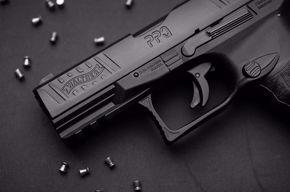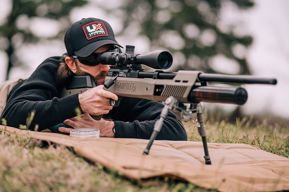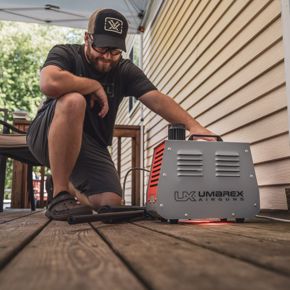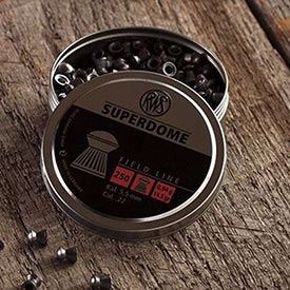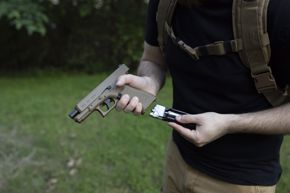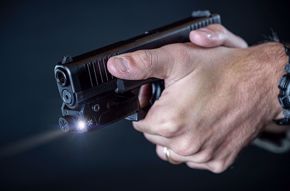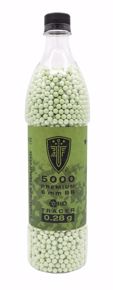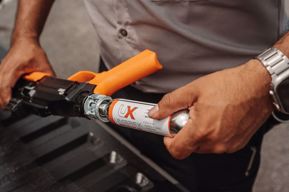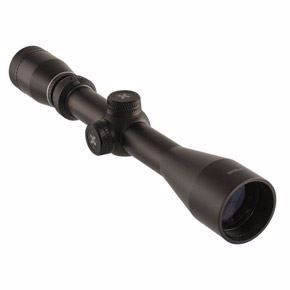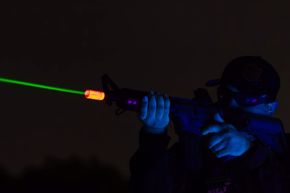There’s never been a more exciting time to shoot airguns. Basically, if you can imagine it, someone is building it. What are they building? Well, lots of airguns in several categories. In this blog series, we will look at all the facets of the airgun diamond. The first facet of this diamond are one-to-one licensed replicas. Umarex has a well-earned reputation as the “King of Replicas”, but there are other companies in the game as well. The long and short of it is that if there’s a popular real-steel handgun out there, chances are there’s a .177 BB, pellet, 6mm airsoft, or even a paintball version of that gun on the market.
Powering Replica Airguns
The most common fuel for replica airguns is CO2– namely the CO2 found in the common 12g non-threaded cartridge. These easily recognizable “silver” metal bottles are used in BB, pellet, and airsoft pistols. However, CO2 is not the only propellant in the business. The next most common propellant is green gas. Green gas is a term applied to the mixture of propane and silicone oil that is used exclusively in 6mm airsoft pistols. Propane is a common gas used for making heat when it is burned. Silicone oil is a lubricant that works very well in all sorts of airguns, especially airsoft pistols.
Propane pressurizes at a lower PSI rating than CO2, therefore it is much better suited to launching the much lighter 6mm plastic BB. CO2 can be used for the lightweight airsoft BBs, too, but the valving is typically changed so that a lighter charge of gas is released with each shot. For .177 steel BBs or pellets, CO2 generates more than enough power for recreational shooting.
Airgun Ammunition
When it comes to feeding an airsoft pistol, 6mm plastic BBs are what you need. Just like with other choices in life, you get what you pay for with airsoft ammo. Most big box retailers will stock cheaper, lighter-weight BBs meant for use in entry-level airsoft guns. These cheaper BBs will have visible seams and sometimes even misaligned seams. This will cause erratic flight and can sometimes damage the gun. Additionally, BBs with weights in the .12 to .16 gram range just don’t offer the best accuracy, especially if your target is more than a few feet away from you. This is where a quality BB like the Elite Force Airsoft BIO BB line comes in. Not only are the EF BIO BBs seamless, but they are biodegradable. And they come in heavier weight offerings, .20 gram. .25 gram, and, .28 gram.
For .177 caliber BB guns, there are some general guidelines we advise people to follow. Not all BBs are the same, and what we’ve discovered is that “silver” BBs like our UX Premium BBs tend to work the absolute best, but anodized BBs, like our Hornady Black Diamond’s also shoot very well. Some other coatings tend to flake off and can cause feeding issues in certain repeating CO2 airguns.
There are more pellet action pistols on the market these days. These pistols, like the Umarex SA10 and the Walther PPQ M2 use either a rotary magazine or belt magazine to feed pellets into the barrel. CO2 pellet pistols are usually limited by two factors, shape and weight of the pellet. Since the charge behind the pellet cannot be boosted, CO2 pellet pistols do work best with pellets that are 7 grains or lighter. Also, the length of the pellet can also be an issue. With this in mind, a flat-tipped pellet is the best choice for a CO2-powered pellet pistol. It will simply be the most accurate as well as the best functional fit for the pellet pistol.
Care and Maintenance
This information should not come as a surprise to anyone. For best performance, keep the gun clean and appropriately lubricated. The exterior is pretty easy to deal with. Most of the time just wiping it off with a clean, dry cloth or rag is enough to do the trick. Be careful when applying cleaning solvents to the exterior of the airgun. It is best to test any cleaning solvent out on an inconspicuous location on the gun.
When it comes to cleaning and lubricating the inside parts of the airgun, using the right lubricant means everything. For some CO2 and green gas-powered airguns, this begins and ends with silicone oil, such as RWS Chamber Lube or T4E OIL. Either product will be suitable for the task at hand. For CO2-powered airguns, placing a drop on top of the fresh CO2 cylinder is usually all that is needed. If there are trigger bars, or other moving parts in the assembly, a standard gun oil or machine oil can be used, BUT, if there is a chance the oil will make contact with a silicone seal or the valve assembly, you must only use silicone oil on that part.
Regular oil and silicone seals don’t get along with each other and if regular oil gets pressurized, it can combust, like a diesel motor, by heat of compression.
Getting the Most From Your Gear
Many of our licensed replicas are compatible with accessories and holsters that are made for the real steel firearms they are based on. If you are looking to replicate training scenarios for concealed carry, look no further than a .177 or 6mm airgun replica to help you get in the trigger time without dumping thousands of dollars for ammo. Additionally, if you are part of a church security team, or would just like to take part in force-on-force training, an airsoft pistol (or several of them) is the cheapest and most practical way for your security team to train. Of course, BB and pellet pistols can be used for just plain old plinking fun and even target shooting. And airsoft pistols are great, essential in fact, for, you know, airsoft.

